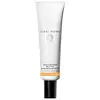What's inside
What's inside
 Key Ingredients
Key Ingredients

 Benefits
Benefits

 Concerns
Concerns

 Ingredients Side-by-side
Ingredients Side-by-side

Water
Skin ConditioningEthylhexyl Methoxycinnamate
UV AbsorberGlyceryl Triacetyl Ricinoleate
EmollientOctyldodecyl Neopentanoate
EmollientDiethylhexyl Succinate
EmollientButylene Glycol
HumectantEthylhexyl Salicylate
UV AbsorberTitanium Dioxide
Cosmetic ColorantButyrospermum Parkii Butter
Skin ConditioningGlycerin
HumectantSteareth-21
CleansingGlyceryl Stearate
EmollientCitrus Grandis Peel Oil
MaskingPelargonium Graveolens Flower Oil
MaskingCereus Grandiflorus Flower Extract
Skin ConditioningLactobacillus Ferment
Skin ConditioningNiacinamide
SmoothingEthylhexylglycerin
Skin ConditioningCaprylyl Glycol
EmollientCholesterol
EmollientIsohexadecane
Emollient7-Dehydrocholesterol
Emulsion StabilisingSodium Hyaluronate
HumectantBiosaccharide Gum-1
HumectantMagnesium Aluminum Silicate
AbsorbentAluminum Hydroxide
EmollientSteareth-2
EmulsifyingCetyl Alcohol
EmollientAcrylamide/Sodium Acryloyldimethyltaurate Copolymer
Emulsion StabilisingXanthan Gum
EmulsifyingLecithin
EmollientPotassium Stearate
CleansingSodium Hydroxide
BufferingPolysorbate 80
EmulsifyingSorbitan Oleate
EmulsifyingCitric Acid
BufferingLimonene
PerfumingCitronellol
PerfumingGeraniol
PerfumingLinalool
PerfumingCitral
PerfumingTocopheryl Acetate
AntioxidantBHT
AntioxidantPhytic Acid
Disodium EDTA
Magnesium Ascorbyl Phosphate
AntioxidantPhenoxyethanol
PreservativeSorbic Acid
PreservativeMica
Cosmetic ColorantCI 77891
Cosmetic ColorantCI 77491
Cosmetic ColorantCI 77492
Cosmetic ColorantCI 77499
Cosmetic ColorantWater, Ethylhexyl Methoxycinnamate, Glyceryl Triacetyl Ricinoleate, Octyldodecyl Neopentanoate, Diethylhexyl Succinate, Butylene Glycol, Ethylhexyl Salicylate, Titanium Dioxide, Butyrospermum Parkii Butter, Glycerin, Steareth-21, Glyceryl Stearate, Citrus Grandis Peel Oil, Pelargonium Graveolens Flower Oil, Cereus Grandiflorus Flower Extract, Lactobacillus Ferment, Niacinamide, Ethylhexylglycerin, Caprylyl Glycol, Cholesterol, Isohexadecane, 7-Dehydrocholesterol, Sodium Hyaluronate, Biosaccharide Gum-1, Magnesium Aluminum Silicate, Aluminum Hydroxide, Steareth-2, Cetyl Alcohol, Acrylamide/Sodium Acryloyldimethyltaurate Copolymer, Xanthan Gum, Lecithin, Potassium Stearate, Sodium Hydroxide, Polysorbate 80, Sorbitan Oleate, Citric Acid, Limonene, Citronellol, Geraniol, Linalool, Citral, Tocopheryl Acetate, BHT, Phytic Acid, Disodium EDTA, Magnesium Ascorbyl Phosphate, Phenoxyethanol, Sorbic Acid, Mica, CI 77891, CI 77491, CI 77492, CI 77499
 Reviews
Reviews

Ingredients Explained
These ingredients are found in both products.
Ingredients higher up in an ingredient list are typically present in a larger amount.
Aluminum Hydroxide is a form of aluminum. It can be naturally found in nature as the mineral gibbsite. In cosmetics, Aluminum Hydroxide is used as a colorant, pH adjuster, and absorbent.
As a colorant, Aluminum Hydroxide may add opacity, or reduce the transparency. Aluminum hydroxide is contains both basic and acidic properties.
According to manufacturers, this ingredient is an emollient and humectant. This means it helps hydrate the skin.
In medicine, this ingredient is used to help relieve heartburn and help heal ulcers.
There is currently no credible scientific evidence linking aluminum hydroxide in cosmetics to increased cancer risk.
Major health organizations allow the use of aluminum hydroxide in personal care products and have not flagged it as a carcinogenic risk at typical usage levels.
Learn more about Aluminum HydroxideCaprylyl Glycol is a humectant and emollient, meaning it attracts and preserves moisture.
It is a common ingredient in many products, especially those designed to hydrate skin. The primary benefits are retaining moisture, skin softening, and promoting a healthy skin barrier.
Though Caprylyl Glycol is an alcohol derived from fatty acids, it is not the kind that can dry out skin.
This ingredient is also used as a preservative to extend the life of products. It has slight antimicrobial properties.
Learn more about Caprylyl GlycolCi 77492 is also hydrated iron III oxide. It's sole purpose is to give a yellow hue to products.
Iron III oxides are classified as inorganic chemicals for coloring.
Synthetically created Ci 77492 is considered safer than those naturally found. This is because the synthetically created version may contain less impurities. Iron oxides are generally non-toxic and non-allergenic.
Learn more about CI 77492Ethylhexylglycerin (we can't pronounce this either) is commonly used as a preservative and skin softener. It is derived from glyceryl.
You might see Ethylhexylglycerin often paired with other preservatives such as phenoxyethanol. Ethylhexylglycerin has been found to increase the effectiveness of these other preservatives.